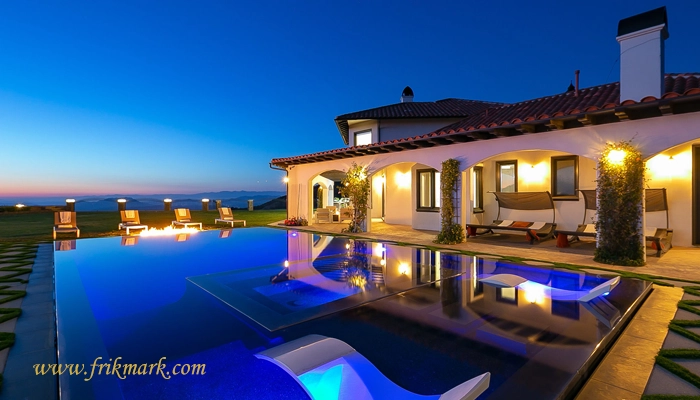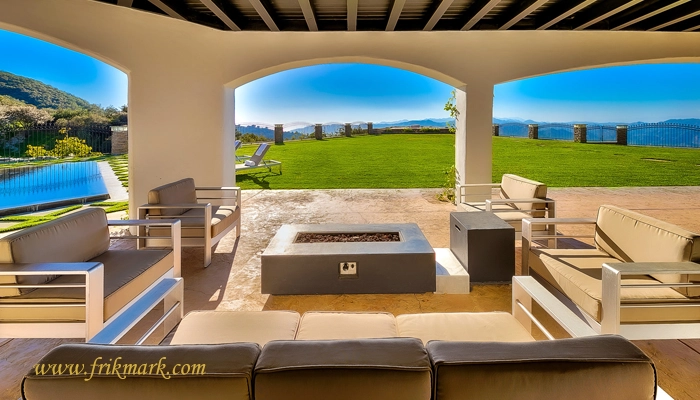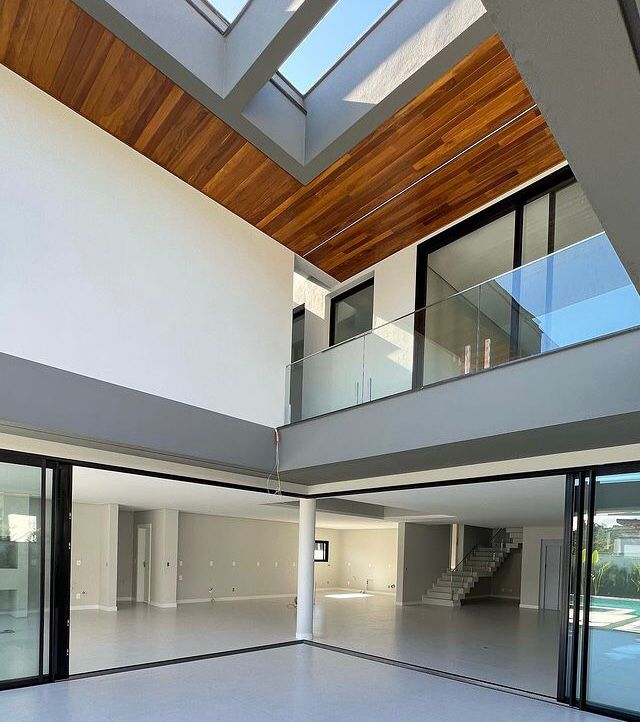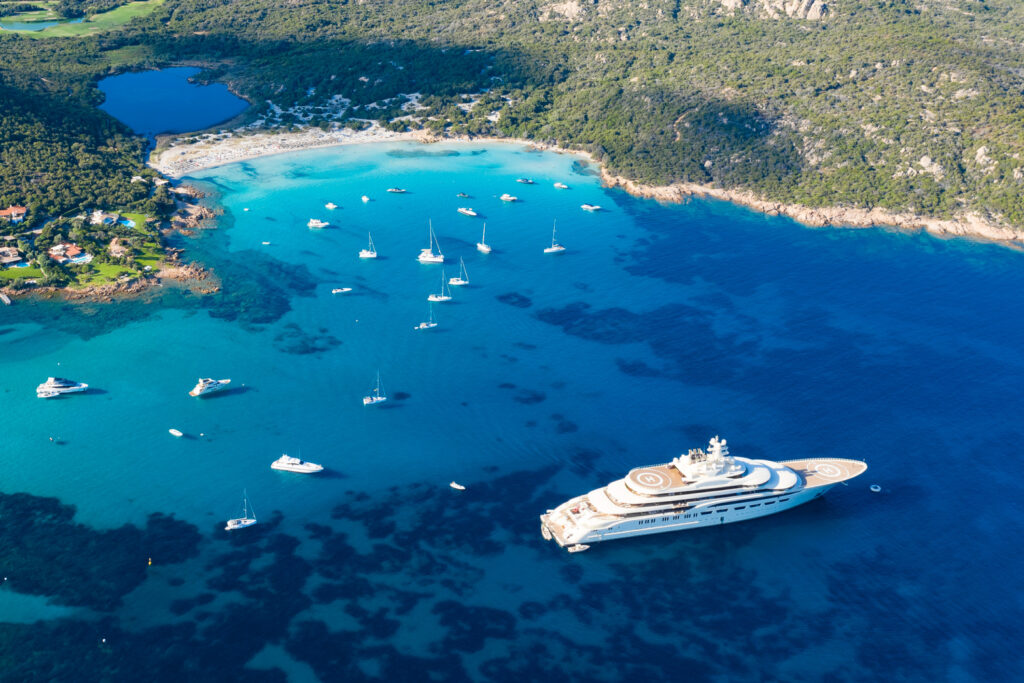Brazilian homes reflect the cultural, geographical and historical diversity of this vast and multinational country. From colorful buildings on the coast to modern and luxurious apartments in the big cities, residential architecture in Brazil encompasses a wide range of styles and features. Brazilian homes are not only places to live, but also a reflection of the Brazilian lifestyle , customs and culture of the people.
Housing culture is very important in Brazilian society, and the home is considered the center of family, community, and daily activities. In Brazil, family life and social interactions play a prominent role in the home and neighborhood environment, and this is reflected in the design and construction of homes. Home spaces are usually well-prepared for family and friendly gatherings.
Due to Brazil’s diverse climate and geography, architectural and construction styles are very diverse. In coastal areas, colorful, Portuguese-style houses are common, while in large cities such as São Paulo and Rio de Janeiro, modern architecture and high-rise apartments are more common. Also, luxury homes with advanced designs and high amenities are seen in wealthy areas. This diversity in residential architecture is a reflection of Brazil’s history, culture, and social conditions, which gives the country’s homes a unique identity.
Also read: Where is the capital of Brazil?
Types of Brazilian houses
Due to the country’s geographical expanse and cultural diversity, Brazilian houses have different styles and structures, each of which represents a part of the history and living conditions of the people of the respective region.

Traditional Brazilian houses and their architectural features
Traditional Brazilian houses are often influenced by Portuguese architecture and indigenous culture. They are usually built from natural materials such as wood and stone and have sloping roofs with red tiles, designed to withstand the heavy rains of the tropical region. Large terraces and balconies in traditional Brazilian houses play an important role in creating open space and natural ventilation. Traditional architecture also creates a warm and intimate atmosphere in the home environment through the use of cheerful and vibrant colors.
Modern houses and urban apartments
With the growth of urbanization and economic development in Brazil, especially in metropolitan cities such as São Paulo and Rio de Janeiro, the architectural style of houses has changed towards the construction of high-rise apartments and modern houses with advanced facilities. These houses usually have a minimalist design, the use of glass and concrete, and open spaces with large skylights. Amenities such as swimming pools, gyms, and advanced security are important features of these types of houses. Urban apartments are the dominant option for living in densely populated areas due to the lack of land and the need for more space.
Differences between houses in different regions of Brazil (urban, coastal, rural)
In urban areas, houses are mainly built as high-rise apartments or modern residential complexes, which focus on optimizing space and providing amenities. In coastal areas, especially in famous Brazilian cities such as Rio de Janeiro, open-plan villas with beautiful gardens and direct access to the beach are common. These houses are usually colorful and their architectural style emphasizes outdoor living and taking advantage of natural landscapes. In rural and inland areas of Brazil, houses are simpler and made of local materials, and their architecture is more practical and adapted to the climate of the region. These houses usually have large courtyards and open spaces for agricultural and livestock activities.
Also read: The language of the people of Brazil
Luxury homes in Brazil
Luxury homes in Brazil represent a combination of modern design, advanced amenities, and an affluent lifestyle, built in specific areas and aimed at attracting the wealthy segment of society. These homes are not only considered residences but also symbols of social status and a culture of luxury living.
Features and Amenities of Brazilian Luxury Homes
Luxury homes in Brazil are usually large in size, with modern architecture and very stylish and unique interior design. The use of high-quality materials such as natural stones, expensive woods and smart home systems are common features of these homes. Extensive amenities include a private pool, gym, cinema room, large gardens, advanced security system and sometimes a tennis court or private gym. Large windows with breathtaking views of the city or sea, spacious terraces and open spaces for holding parties are also prominent features of these homes.
Popular areas for luxury homes
Most luxury homes in Brazil are built in affluent areas and large cities. Popular areas such as Ipanema and Barra da Tijuca in Rio de Janeiro, São Paulo, and the northeastern coastal regions of Brazil are the focus of luxury homes. In addition to natural beauty, these areas offer access to urban amenities and high security, making them attractive to investors and buyers of luxury homes.
The Influence of Wealth and Culture on Lifestyle in Luxury Homes in Brazil
Luxury homes in Brazil are a symbol of wealth and high social status, and the lifestyle of their residents usually includes holding large parties, special entertainment and enjoying the latest welfare technologies. The culture of hospitality and warmth of the Brazilian people is clearly seen in these homes with the design of open spaces suitable for friendly and family gatherings. Also, these homes are a reflection of the desire for a luxurious and modern life while preserving local traditions and beauty, which in a way displays a fusion of Brazilian culture with global standards.
Also read: Customs clearance in Brazil
Lifestyle in Brazilian homes
Daily life in Brazilian homes is a combination of family intimacy, broad social connections, and respect for cultural traditions, which is also clearly visible in the design and use of residential space. Brazilian homes are usually warm and friendly, welcoming to family and friends, and are the center of social life.

Daily life in Brazilian homes
Brazilians often spend a lot of time at home and attach great importance to it. Breakfast, lunch and dinner are usually eaten together as a family, and these meals are an opportunity to talk and strengthen family relationships. In many homes, outdoor spaces such as terraces or courtyards are reserved for family gatherings and friendly parties, which play an important role in social life. The use of warm colors and simple but pleasant decoration provide peace and comfort for the residents.
The role of family and community in the design and use of residential spaces
In Brazilian homes, the importance of family and community is clearly seen in the layout and architecture. Rooms and common spaces, such as the living room and large kitchen, are designed to allow family members and guests to gather. These spaces are often open and light-filled to create a sense of warmth and intimacy. In addition to family, the neighborhood and social relationships are also very important, and many daily activities, such as shopping, children’s play, and recreation, take place in local environments and alleys.
Rituals and traditions related to the home and family life
In Brazilian culture, the home is not only a place of residence but also the center of traditional ceremonies and family occasions. Important celebrations and holidays such as Christmas, Easter, and Carnival often involve gatherings of family and friends in the home. The tradition of hospitality is also part of everyday life, and guests are usually welcomed warmly. These traditions are also reflected in the design of homes, with special spaces for receiving and entertaining guests.
Changes and developments in Brazilian residential architecture
The history of residential architecture in Brazil shows extensive changes influenced by economic, social and cultural factors. These developments, together with technological advances, have led to today’s Brazilian homes being a fusion of tradition and modernity, responding to the new needs of modern society.
The impact of economic and social factors on house construction
Economic growth and social changes in Brazil have played an important role in the evolution of residential architecture. Increased urbanization and urban population growth have led to an increase in demand for smaller apartments and houses in large cities, while in affluent areas, luxury homes with many amenities have been built. Also, changes in people’s lifestyles and greater attention to environmental issues have led to house architecture taking advantage of open spaces, natural light, and energy efficiency.
New trends in Brazilian architecture and interior design
In recent years, modern architectural styles and minimalism have become extremely popular in Brazilian interior design. Open-plan design, the use of neutral colors and natural materials such as wood and stone, along with simple and functional furniture are the main features of these trends. Brazilian architects also seek to balance beauty and functionality to provide comfortable and beautiful spaces for people’s daily lives. In addition, sustainable and environmentally friendly designs, such as the use of sunlight and natural ventilation, have been prioritized.
Use of new technology and materials in house construction
New technologies and advanced materials play an important role in improving the quality and durability of Brazilian houses. The use of smart home systems, solar panels, thermal and acoustic insulation, and materials resistant to moisture and fire are examples of these developments. The use of rapid and cost-effective construction methods has also allowed for faster and more economical housing development. These developments have made Brazilian houses not only beautiful and modern, but also functionally optimal and sustainable.
Frequently asked questions about Brazilian homes
-
How many rooms do Brazilian houses typically have?
Brazilian houses vary depending on geographical location and type of housing, but most urban homes have 2 to 4 bedrooms. In rural areas and luxury homes, the number of rooms may be higher to provide more space for large families.
-
What materials are Brazilian houses mostly made of?
Common materials used in Brazilian houses include brick, cement, and concrete, but in more traditional areas, wood is also used. In luxury homes, in addition to these materials, natural stones, glass, and high-quality metals are also used.
-
Are Brazilian homes energy efficient?
In recent years, due to greater attention to environmental issues, the use of energy-saving technologies such as solar panels and advanced insulation systems in home construction has increased, but a significant portion of homes are still not optimized.
-
Can you buy a house in Brazil online?
Today, with the advancement of technology, many real estate transactions in Brazil are done online and there are reputable sites and platforms for buying and renting houses, but it is recommended to go through local real estate agents for complete certainty.
-
How much does it cost to maintain a home in Brazil?
The cost of maintaining homes in Brazil varies depending on the region, type of home, and amenities, but typically, costs related to electricity, water, landscaping, and security are among the main expenses, and these costs are higher for luxury homes.
Conclusion
Brazilian homes are a living reflection of the cultural, climatic, and social diversity of this large and vibrant country. From colorful traditional houses in rural and coastal areas to modern urban apartments and luxury homes with state-of-the-art amenities, Brazilian residential architecture represents a clever blend of tradition and innovation. These homes are not only living spaces but also part of the cultural and social identity of the Brazilian people.
The importance of homes in Brazilian culture goes beyond mere residence; they are the center of family gatherings, the place where traditional celebrations and occasions are held, and a symbol of lifestyle and social values. The design of homes is shaped by the importance of family and social interactions, and for this reason, open spaces and the reception of guests have a special place in them.
The future vision of residential architecture in Brazil is moving towards sustainable and smart development, focusing on sustainability, new technologies and the preservation of cultural heritage. The use of environmentally friendly materials, optimizing energy consumption and designing multifunctional spaces are some of the new trends that are shaping the future of Brazilian home architecture and responding to the changing needs of society.






